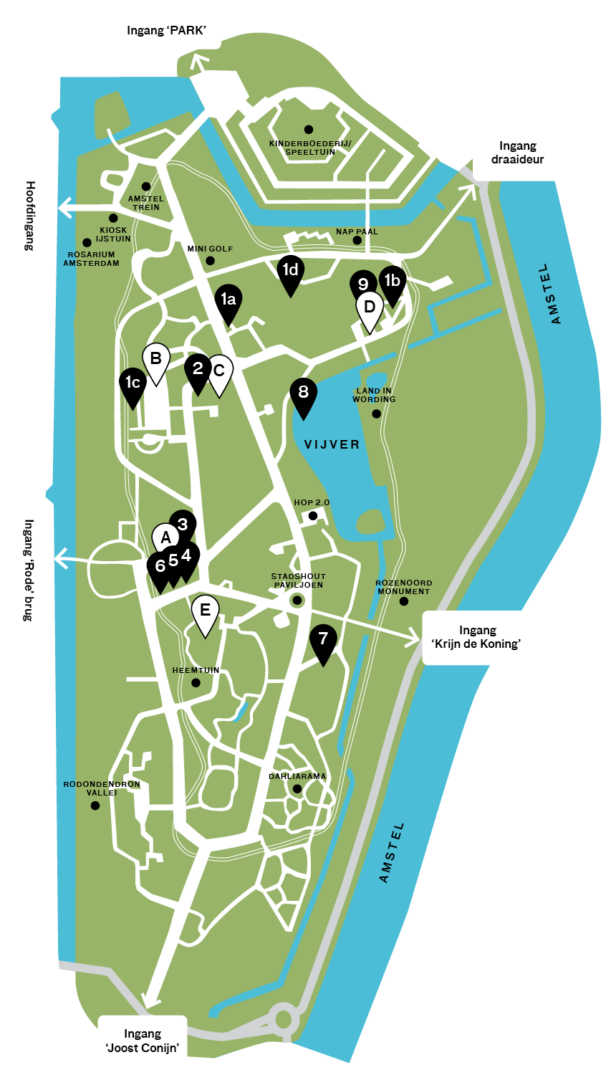Het Glazen Huis
Park Studio (Orangerie)
Rietveld paviljoen
Shadow Garden
Genomic Gastronomy Garden
Four radio plays on location about the history of the Amstelpark told from the perspective of four plants. Scan the QR code on the listening chair with a smartphone and listen on the
4 locations.
Around the Rietveld Huis there are seating elements in various colours, versatile in use, and made of 100% recycled plastic. Form and function refer to the seventies and the design of the Floriade.
This audio walk takes the listener from the Amstelpark to Amsterdam’s financial district the Zuidas. This solitary experience examines the poetry of walking in the urban environment. Scan the QR-code on the poster in front of theGlazen Huis and walk to the Zuidas in 30 minutes.
Listen to sounds we cannot normally hear from trees and plants in the place where they were recorded. Secret Garden subtly changes your experience of the Amstelpark. (Smartphone + headphones recommended, scan QR code to download, no specific starting point, works anywhere in the park).
A series of ‘rhizotrons’ incorporate living soils and plants that allow visitors to experience the rhizosphere – the rootzones of an urban soil environment, specifically that of the Amsterdam regions Zuidoost and Noord. A rhizotron is simultaneously a laboratory, an architectural expression and a technical tool used to observe the most alive space of the soil below the soil’s surface – the rhizosphere.
The Contemplatorium, a combination between sculpture, landscape design and experiential art, is a place where the public can find out for themselves how they want to use the artwork to allow personal and as yet unknown rituals to take place in connection with the natural elements.
Artist collective De Onkruidenier is developing the former Belgian monastery garden into an artist’s garden where public events take place to tell new nature-culture stories together and reflect on our relationships to plants and gardening. On Wednesday mornings between 10.00 and 12.00, Onkruideniers regularly works in the garden, and during events it invites visitors to drop by.
The GENOMIC GASTRONOMY GARDEN grows and interprets edible plants. It studies the technologies and ecologies of human food systems, while tasting and debating the history and future of food. The plants featured in the garden stretch the imagination towards outer space & deep time, while grounding visitors in the here & now through a series of public activities that include community plantings, seed saving workshops, harvest parties, collaborative tastings and interpretive tours.
